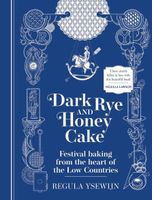The fall of Antwerp and the rise of Amsterdam
Published 2023
In 1576 disaster struck, and the city of Antwerp was looted by mutinous Spanish mercenaries, who murdered close to 10,000 (the actual number is a debated subject) men, women and children, which at that time was almost 10 per cent of the population. This horrendous massacre became known as the ‘Spanish Fury’. In his 1977 book The Dutch Revolt, Geoffrey Parker called it ‘the holocaust of Antwerp’.
Antwerp joined the alliance of the Pacification of Ghent, which united north and Southern Netherlands (current Belgium), both Catholics and Protestants, in the fight against the Spanish oppressor. In 1585, however, Antwerp was defeated by the Spanish steward Alexander Farnese after a year-long siege. After the fall of Antwerp, about half of the population, especially the Protestants, fled the city and migrated to northern Netherlands towns like Middelburg, Haarlem, Leiden, Dordrecht and, most importantly, Amsterdam. Smaller numbers fled to France, England, and German cities such as Hamburg, Aachen and Cologne. English merchants, too, left Antwerp and moved to Middelburg.9 The great printmaker Christoffel Plantijn also fled from Antwerp, taking up a position at the University of Leiden, although he eventually returned to Antwerp, like many others, when things became less heated.
Become a Premium Member to access this page
Unlimited, ad-free access to hundreds of the world’s best cookbooks
Over 160,000 recipes with thousands more added every month
Recommended by leading chefs and food writers
Powerful search filters to match your tastes
Create collections and add reviews or private notes to any recipe
Swipe to browse each cookbook from cover-to-cover
Manage your subscription via the My Membership page
Part of
Advertisement
Advertisement


